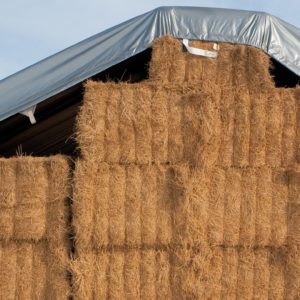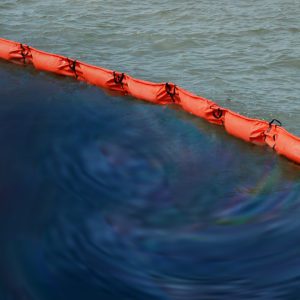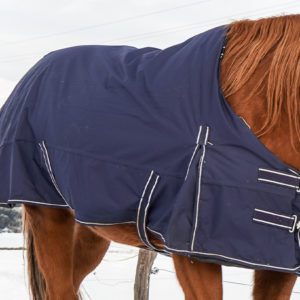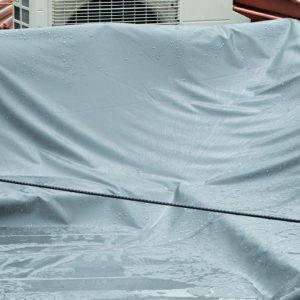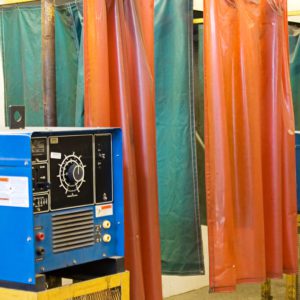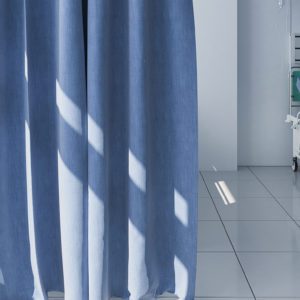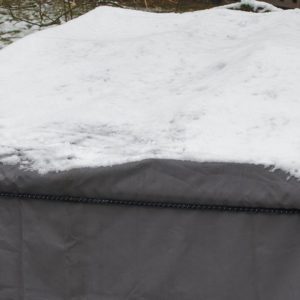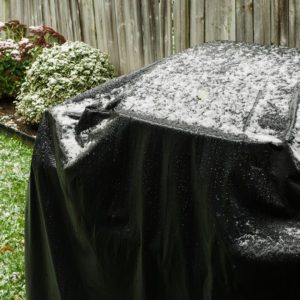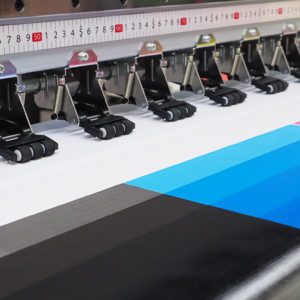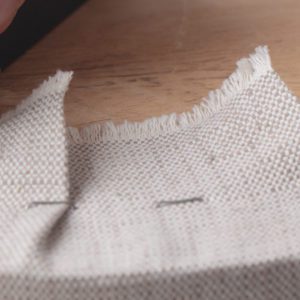It can be tricky to print on vinyl industrial fabrics: environmental conditions and/or older stock can prevent ink from adhering properly, which can lead to peeling ink or other issues. This article will focus on screen and digital printing using solvent and UV inks to print on industrial vinyl fabric.
Key Points about Printing on Vinyl
- Plasticizers make vinyl soft and flexible; however they dissipate over time
- Excessive heat and vinyl age will affect printability
- It can take 24-48 hours for printed vinyl to cure and dry
- Stacking vinyl immediately after printing can cause ink to peel
- Aged vinyl can contribute to printing issues
Important Considerations for Printing on Vinyl Fabric
Plasticizer and Migration
Vinyl is produced using plasticizer. Plasticizer is a necessary chemical additive that makes vinyl pliable & flexible, allowing it to be rolled. It’s important to know that plasticizers can migrate or dissipate with age and heat. These factors play an important role in the printability of vinyl. Once plasticizer migrates or dissipates, it can affect the ink’s ability to adhere to the product when printed.
Climate Controlled Environment is Necessary for Printing on Vinyl Fabric
It is important that vinyl is stored in a temperature-controlled environment without excessive cold or heat. 50-75 degrees Fahrenheit is ideal. Printers should rotate inventory into print production using the oldest rolls first to help avoid problems with possible plasticizer migration.
Screen Printing Vinyl Fabric
Screens are mesh frames with designs engraved for printing. When vinyl fabric is screen printed, it is placed on a print bed or table with a spray-on adhesive coating to stabilize it for printing. The print inks are forced through openings in the screen with automated or handheld squeegees onto the vinyl. The printed vinyl is then run through a belt driven curing oven typically at around 195 degrees Fahrenheit to dry and set the inks.
Best Practices After Printing on Vinyl Fabric
Printed vinyl needs 24-48 hours of curing time prior to shipping. It is critical that the printed panels are properly dried after vinyl is printed utilizing a screen or digital printing process. Allow time for prints to fully cure and de-gas before shipping printed vinyl. This ensures long-term adhesion and prevents failures after delivery.
Stacking Printed Vinyl Too Soon Causes Problems
Finished prints should not be stacked immediately. The adhesive from one panel can lift ink from the surface of the print beneath it, especially if curing isn’t complete.
Digital Printing on Vinyl Fabric with UV Inks
UV digital printing equipment utilizes LED or arc lights on the print head carriage to heat and cure inks as they pass through the printer. These lights operate much like a shutter on a camera. These curing lights primarily cure the surface layer of the printed vinyl; however the UV inks will continue to cure under the surface of the print for 24-48 hours. It is important to allow time for the inks to cure and de-gas all the way through the printed product prior to shipping finished prints. Improperly cured prints may not be noticeable upon shipping; however, the inks may begin to lift and peel by the time they arrive to the end user causing costly reprints.
Will Solvent Ink Have the Same Problems as UV Ink?
Digital printing with solvent inks on vinyl typically does not create issues with ink adhering due to the aggressive nature of the solvent ink biting into the surface of the vinyl. However, the same storage and inventory management guidelines should be used. Plasticizer migration and dissipation can still affect solvent inks long term.
